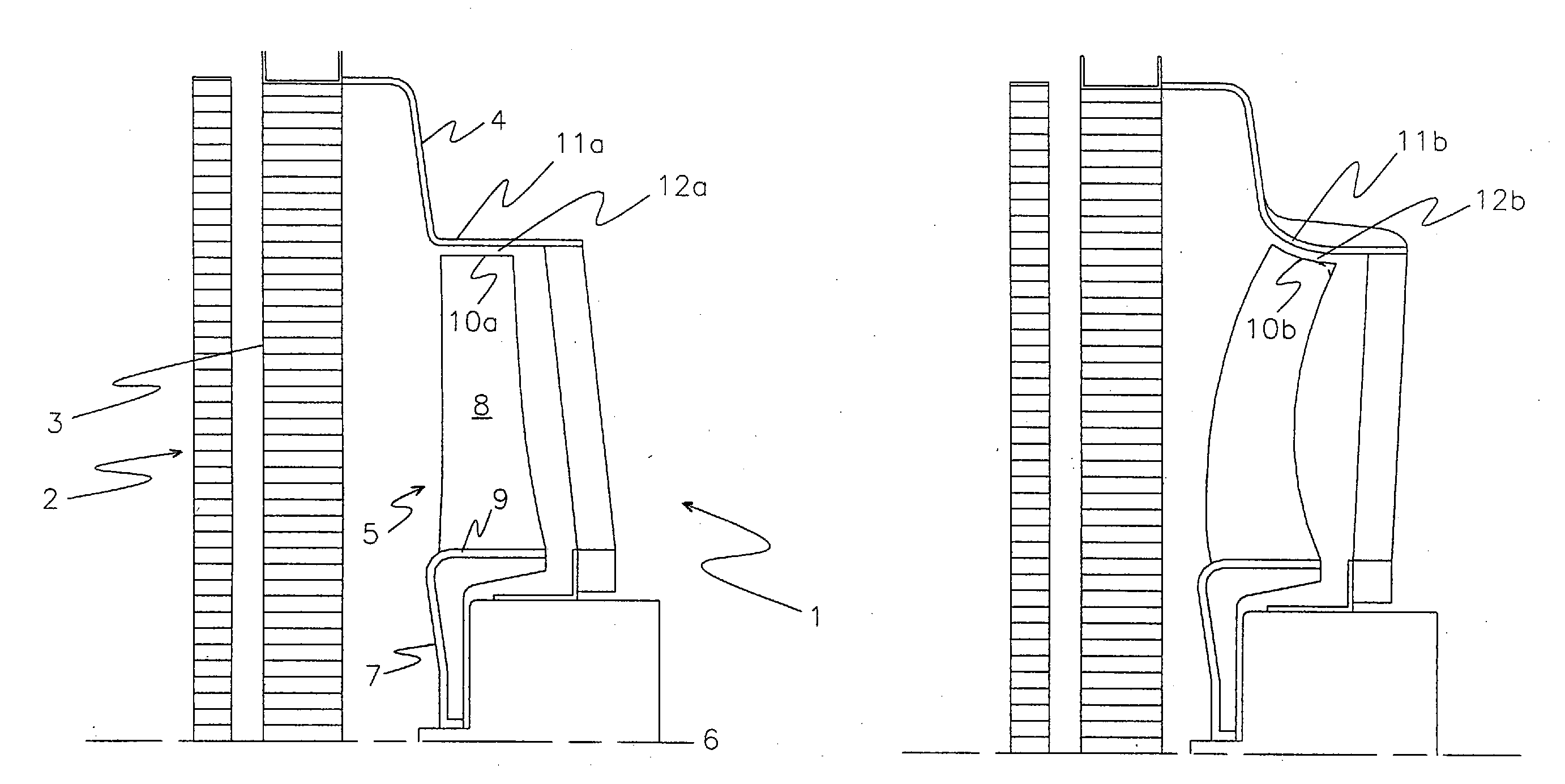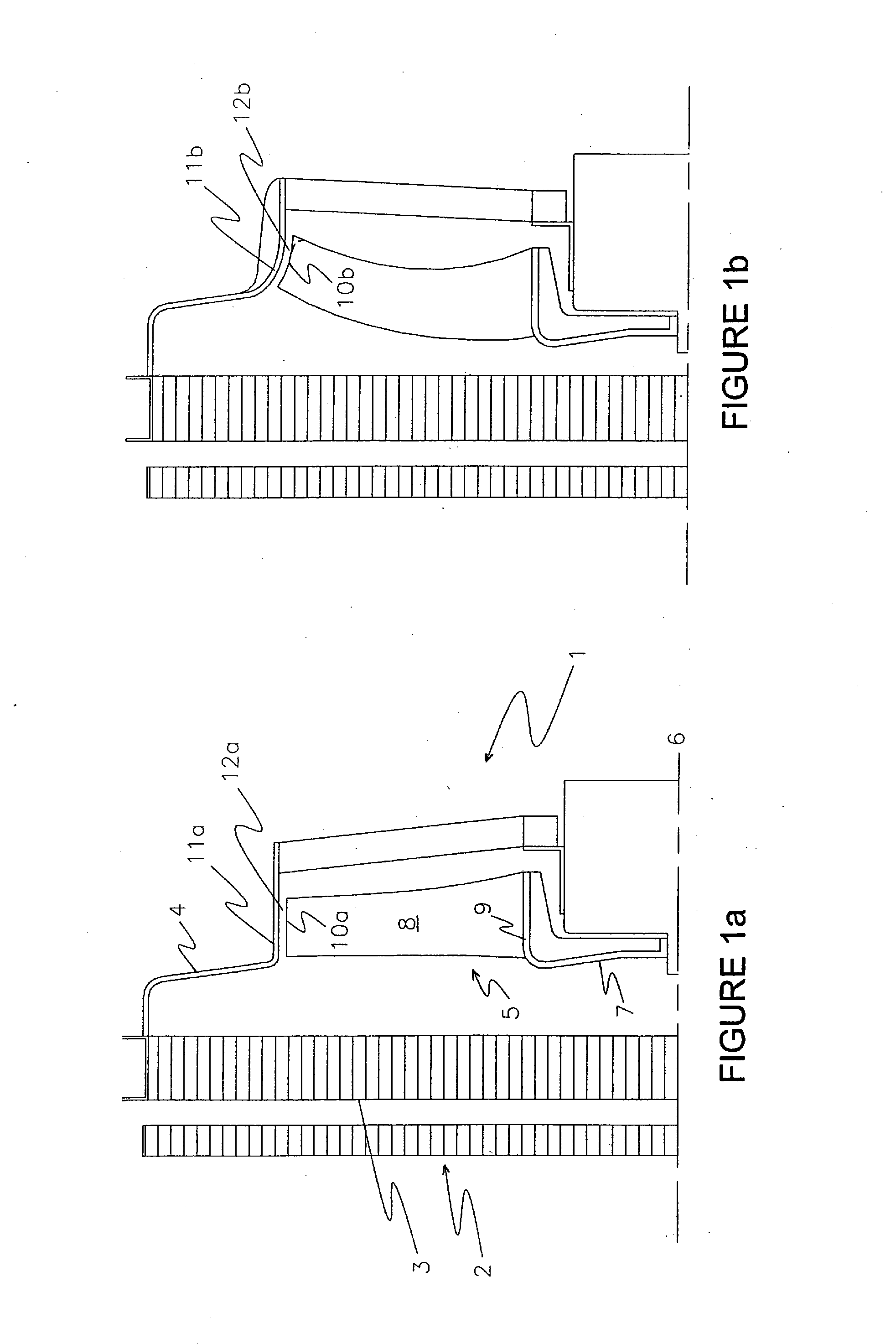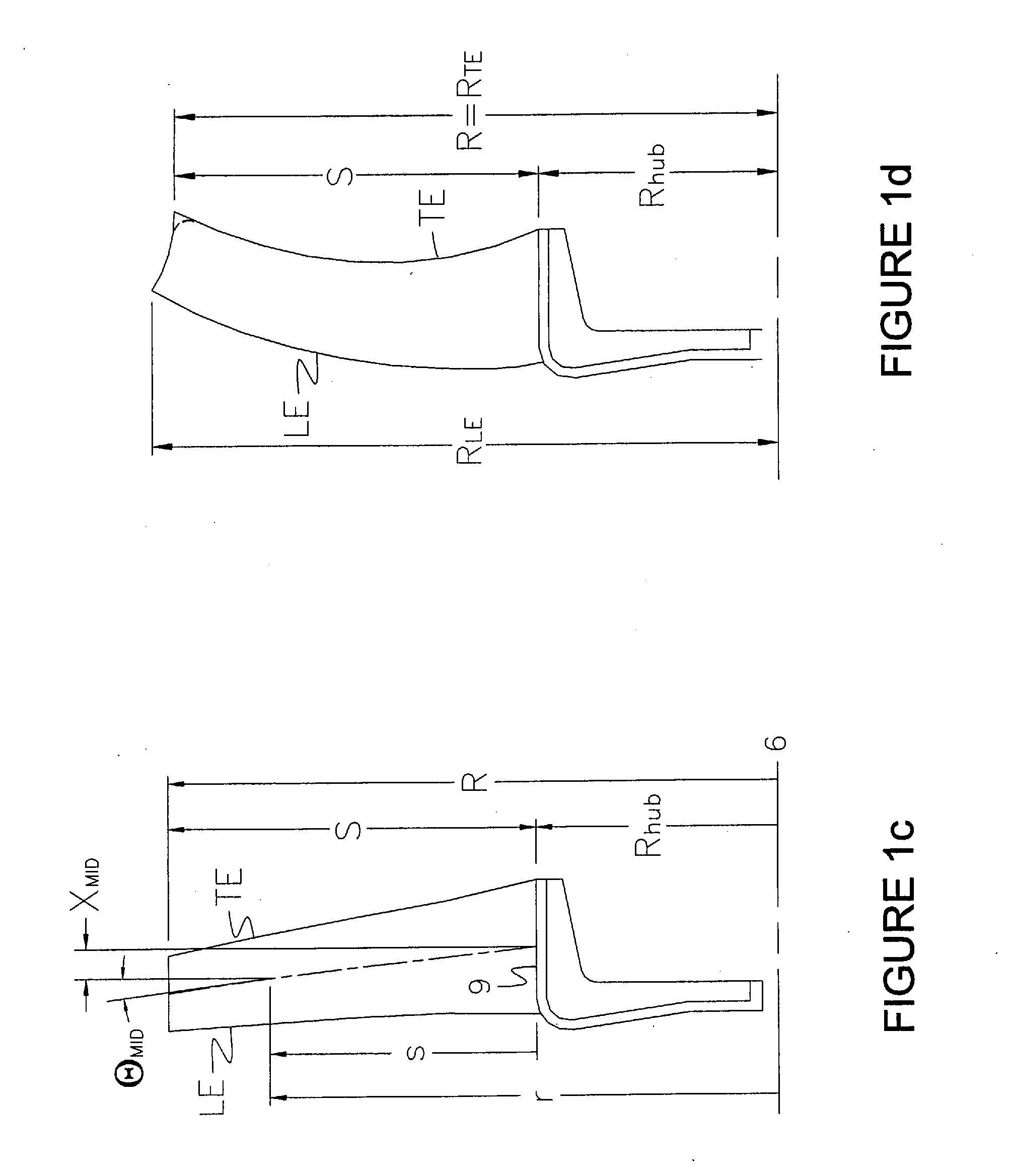Skewed axial fan assembly
- Summary
- Abstract
- Description
- Claims
- Application Information
AI Technical Summary
Benefits of technology
Problems solved by technology
Method used
Image
Examples
Embodiment Construction
the fan shown in FIG. 2a, with definitions of various geometric parameters.
[0034]FIG. 3a shows an axial projection of a prior-art fan with a blade tip which conforms to a flared shroud and a negative leading-edge sweep angle in a radially outer region.
[0035]FIG. 3b shows an axial projection of one blade of the fan shown in FIG. 3a.
[0036]FIG. 3c is a schematic of the bending forces exerted on the trailing-edge portion of the radially outer region of the blade shown in FIG. 3b.
[0037]FIG. 4a shows an axial projection of a fan according to one construction of the present invention.
[0038]FIG. 4b shows an axial projection of one blade of the fan shown in FIG. 4a.
[0039]FIG. 5a shows an axial projection of a fan according to one construction of the invention.
[0040]FIG. 5b shows an axial projection of one blade of the fan shown in FIG. 5a.
[0041]FIG. 6 shows a plot of calculated radial deflection of the blade tip for the fans shown in FIGS. 3, 4, and 5.
DETAILED DESCRIPTION
[0042]FIG. 1a sh...
PUM
 Login to View More
Login to View More Abstract
Description
Claims
Application Information
 Login to View More
Login to View More - R&D
- Intellectual Property
- Life Sciences
- Materials
- Tech Scout
- Unparalleled Data Quality
- Higher Quality Content
- 60% Fewer Hallucinations
Browse by: Latest US Patents, China's latest patents, Technical Efficacy Thesaurus, Application Domain, Technology Topic, Popular Technical Reports.
© 2025 PatSnap. All rights reserved.Legal|Privacy policy|Modern Slavery Act Transparency Statement|Sitemap|About US| Contact US: help@patsnap.com



